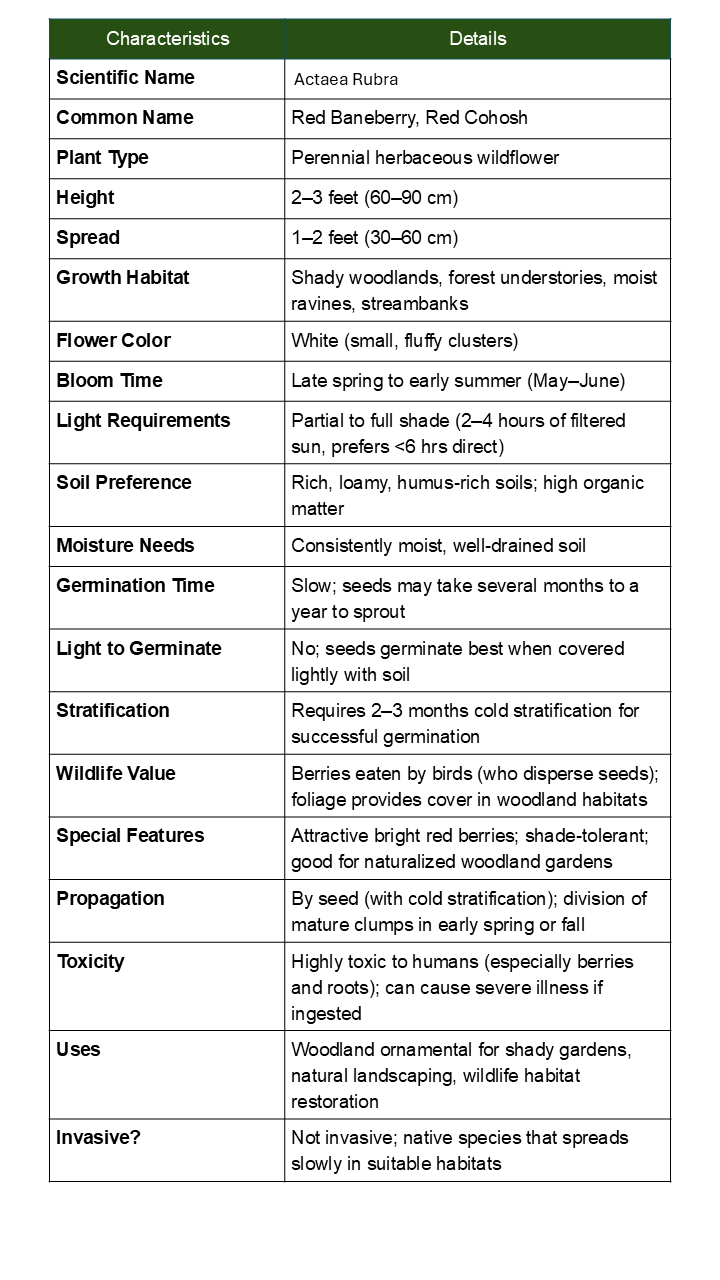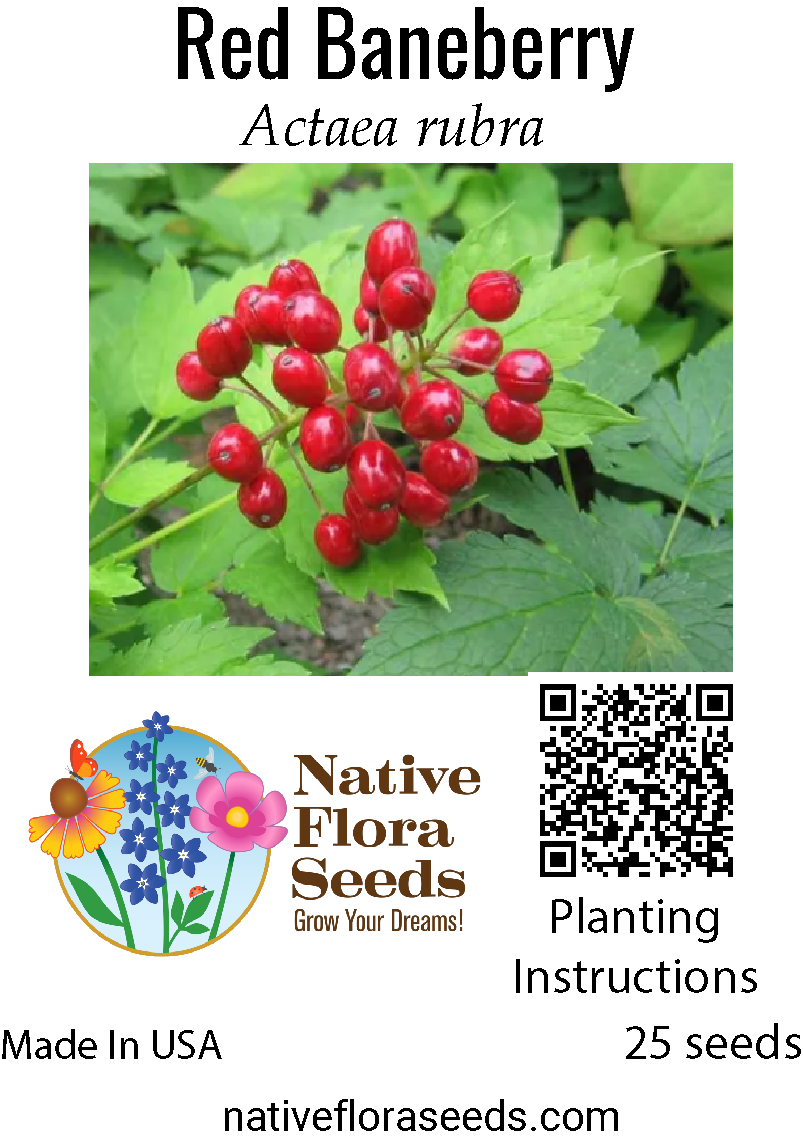Red Baneberry Seeds - Native Woodland Wildflower (Actaea rubra) for Shade Gardens
🍃 Discover the Striking Beauty of Red Baneberry
Experience the captivating charm of Actaea rubra, a remarkable native woodland perennial that brings both delicate spring beauty and dramatic summer interest to shaded gardens. This elegant wildflower produces clusters of small white flowers in late spring, followed by brilliant glossy red berries that create stunning focal points in woodland settings.
✨ Key Features:
- Height: 2-3 feet tall with graceful, upright habit
- Bloom Time: May through June (spring blooming)
- Flower Color: Delicate white flower clusters
- Berry Color: Brilliant glossy red berries in summer
- Native Range: Northern and Eastern North America
- Hardiness: USDA Zones 3-8
🦋 Wildlife Benefits:
- Spring flowers provide nectar for early-season pollinators
- Berries attract birds who help disperse seeds naturally
- Provides shelter and habitat for woodland creatures
- Important component of native forest ecosystems
- Supports biodiversity in shaded environments
🌱 Growing Guide:
- Sun Requirements: Partial to full shade
- Soil: Moist, rich, well-drained woodland soil
- Water: Consistent moisture, drought sensitive
- Maintenance: Low maintenance once established
- Germination: Cold stratification required for 120+ days
- Spacing: Plant 18-24 inches apart
⚠️ Important Safety Note:
CAUTION: All parts of Red Baneberry, especially the berries, are highly toxic to humans and pets. Plant only in areas where children and pets cannot access the berries. This plant is for ornamental and ecological purposes only.
Perfect for woodland gardens, shade borders, and native plant collections. This striking native brings year-round interest while supporting forest ecosystems - with proper safety precautions.


